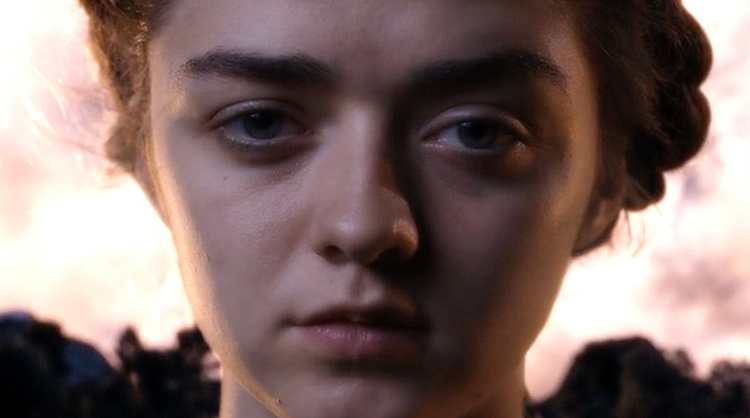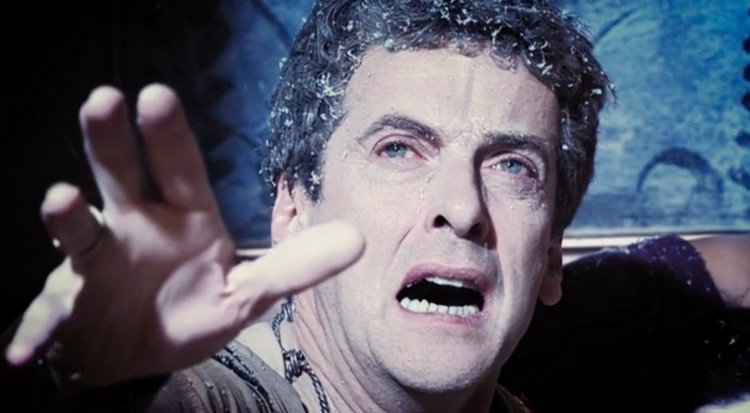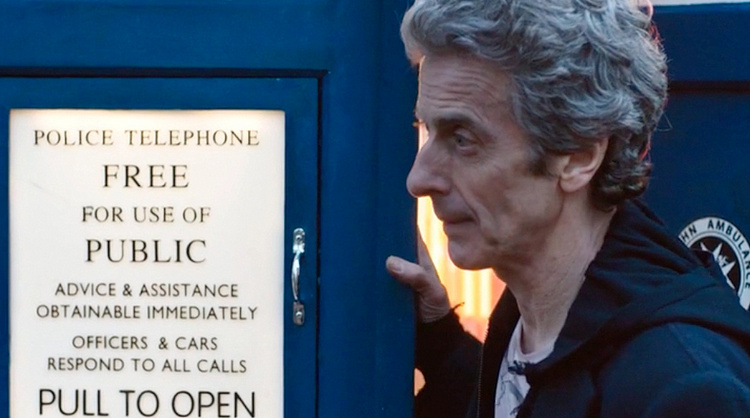No, no, not Vikings. I’m not in the mood for Vikings…
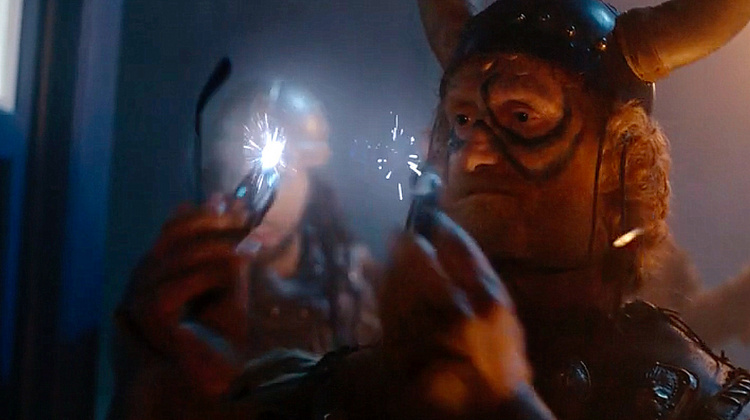
Take that, sonic shades (although I am sure they won’t give up that easily). A killer scene to follow the opening sequence.
Ashildr
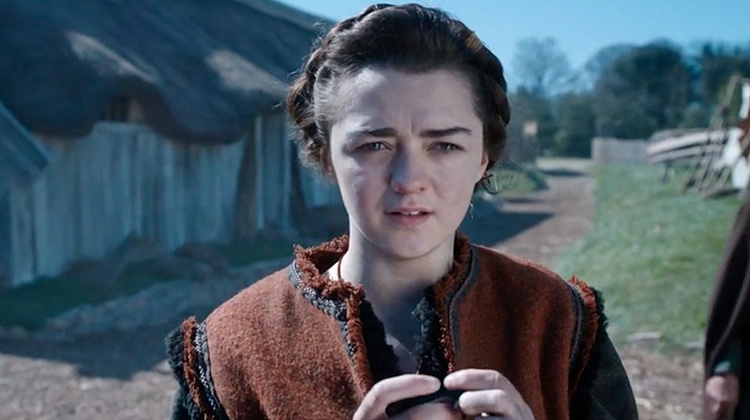
Young Maisie Williams has some big responsibilities, namely playing the most beloved character in Game of Thrones. Moreover, Arya Stark is one of the most beloved characters in George R.R. Martin’s A Song of Ice and Fire. She captured everyone’s hearts immediately in Game of Thrones, and she’s managed to do the same with Doctor Who. Maisie certainly lived up to the hype surrounding her guest role (with more to come next week), but speculation has increased greatly with the announcement Jenna Coleman was leaving this season. I’m sure Ashildr is becoming a favourite for the next companion.
False Odin
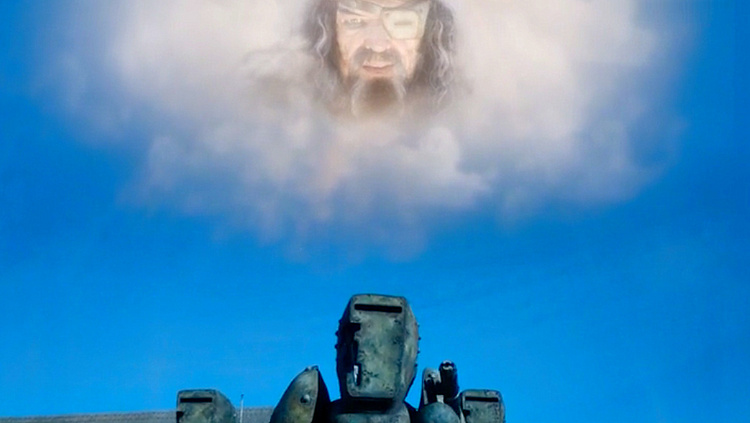
False Odin was not only wonderfully comical, he was downright unhinged. Juicing Vikings to drink their testosterone is just plain weird, not to mention evil. It made his humiliating defeat all the better. And the Mire were really rather scary when the helmets came off.
Do babies die with honour?
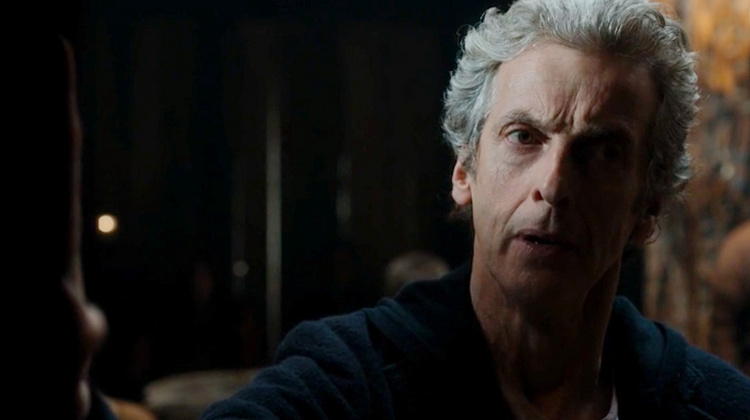
This referenced the previously demonstrated ability to translate baby, only there was no humorous edge to this baby talk. Lofty’s baby was a poetic soul, but what these scenes really demonstrated was the pain that the death of innocents causes in war, and what the Doctor seems to be pre-occupied with of late – which is losing Clara.
Lofty, Daphne, Noggin the Nog, ZZ Top… Heidi
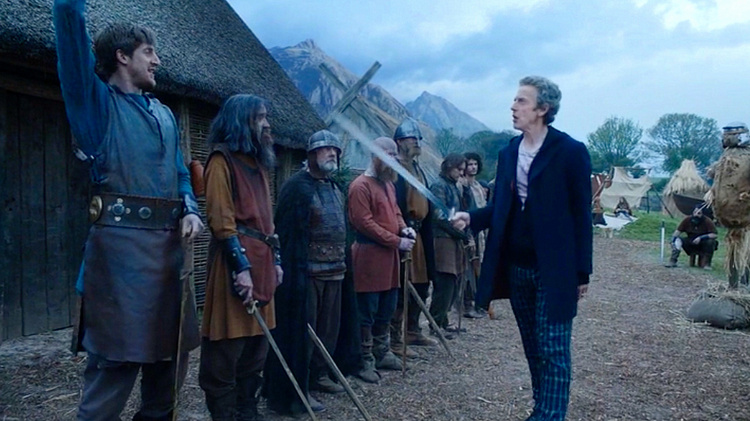
The supporting cast really could have been lost in the shuffle this week, but the scenes where the Doctor attempted to train them for battle were not only comical, but allowed the personalities of minor characters to really shine through.
Show them a story they’ll never forget

This is such a traditional element in the fantasy genre, and especially children’s books. The vulnerable element of Ashildr’s character was the awkward young girl that lost herself in stories, and it made the scene where she told the Doctor that she was afraid especially heart-breaking. Not only because it was an ominous foretelling, but because every genre fan knows the power of storytelling.
I’m sick of losing people

I’m sick of losing people. Look at you, with your eyes, and your never-giving-up, and your anger, and your… kindness. One day… the memory of that will hurt so much that I won’t be able to breathe, and I’ll do what I always do. I’ll get in my box and I’ll run and I’ll run, in case all the pain ever catches up — and every place I go, it will be there.
This is long overdue. We’ve had the supposedly uncaring Doctor most of last season, and the supposedly uncaring ‘Doctor’ Clara this season. It’s not particularly honest to either character to make out that they would put people’s lives at risk without caring, and this demonstrates not only the Doctor’s heartbreak at sending a young girl to her death, but his loneliness in immortality.
I know this face
Finally, the connection between the Doctor’s face and Caecilius from The Fires of Pompeii is revealed. The Fisher King’s mocking of time travel ‘rules’ in Before the Flood last week seem all the more significant now…still locked in your history. Still slavishly protecting Time. Willing to die rather than change a word of the future. The Fisher King’s words showed just how much these rules trapped the Doctor. That he chose this face with his last regeneration to remind him that once in a while he could, and should break the rules to save lives, worked perfectly.
I know where I got this face, and I know what it’s for….To remind me. To hold me to the mark. I’m the Doctor, and I save people. And if anyone happens to be listening, and you’ve got any kind of a problem with that, to hell with you!
Immortality
The Girl Who Died was just full of wonderful moments and dialogue, and woven in and out of the comical sub-plot was the overarching theme of responsibility, and immortality. The Doctor is responsible for Clara, he constantly puts her in danger and we see the impact the death of innocents has on the Doctor. The Doctor can’t bear to think of losing Clara, or any of his companions, but lose them he must. So when he resurrects Ashildr he gives her a spare repair chip, because he knows the pain of losing those you love over and over again.
Immortality isn’t living forever, that’s not what it feels like. Immortality is everybody else dying. She might meet someone she can’t bear to lose. That happens… I believe.
In a way… she’s a hybrid
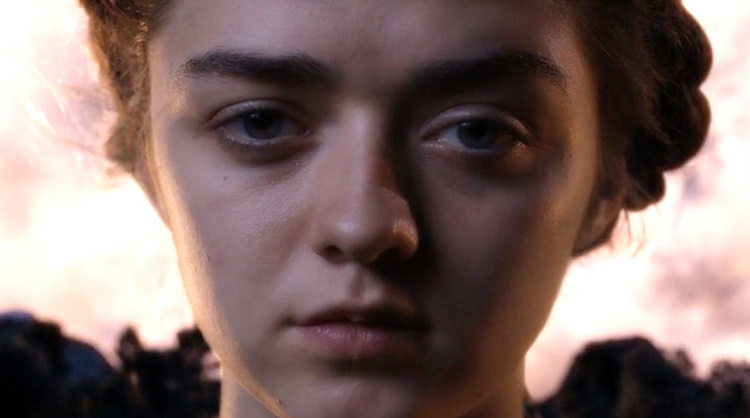
So just what realisation did the Doctor come to when he described Ashildr as a hybrid? Was it a reference to the discussion between the Doctor and Davros in The Witch’s Familiar?
Davros: There was a prophecy, Doctor, on your own world.
The Doctor: Please you must, you must stop this. You must stop this!
Davros: It spoke of a hybrid creature. Two great warrior races forced together to create a warrior greater than either. Is that what you ran from, Doctor? Your part in the coming of the hybrid? Half Dalek, half Time Lord?
Or half Viking, half Mire, “one of the deadliest warrior races in the entire galaxy”? The Doctor implanting the Mire’s repair chip in Ashildr means she may not be able to die. Captain Jack, who had a similar repair system, did die after a very long time. But it at least ensures her character will be able to return. There’s little chance Maisie could become a full time Doctor Who companion, she still has several years left of Game of Thrones. But there is a very good chance she could become a recurring guest. Which makes the ‘hybrid’ prophecy all the more intriguing.
I was angry. I was emotional. Just possibly, I have made a terrible mistake. Maybe even a tidal wave. Time will tell, it always does.

